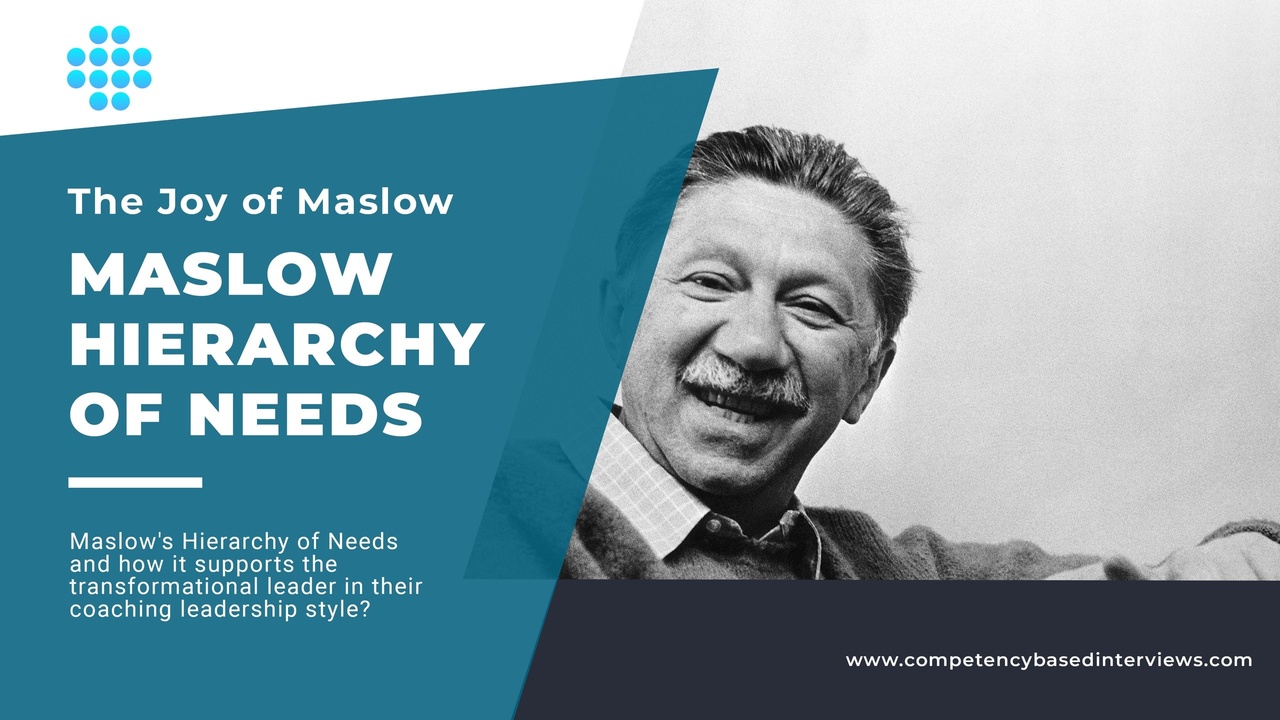
THE JOY OF MASLOW:
Jan 31, 2022How does Maslow's Hierarchy of Needs support the transformational leader in their coaching leadership style?
Great leaders inspire confidence in other people and move them to action. In the most simple terms, there are two types of leadership: transactional and transformational.
Transactional leaders focus on organisation, supervision, and group performance. The status quo and day-to-day progress toward set goals are where they feel comfortable.
Meanwhile, transformational leadership is a style of leadership characterised by visionary thinking, motivation, and engagement, delivering a shared vision that will change the organisation or community.
Transactional leadership operates within existing parameters of processes, structures, and goals, whereas transformational leadership challenges the current state and is change-oriented.
James MacGregor Burns, in 1978, established the concept of a "transformational leader." He defined a transformational leader as an individual who shows certain behaviours and traits to inspire and motivate a team or organisation to achieve a shared vision or goal. These behaviours and traits include intellectual stimulation, charisma, inspirational motivation, and individual consideration for each team or group member.
Burns' theory was inspired by Abraham Maslow's Theory of Human Needs. Essentially, Maslow realised how human behaviour is based on needs and fulfilling them. The higher range of conditions is what Burns was interested in, as the transformational leader needs good self-esteem and self-actualisation to succeed.
Individual growth and development
Transformational leadership affects peoples' growth. Abraham Maslow places self-actualisation at the top of the hierarchy of needs and defines it as an individual's full realisation of his potential. Transformational leadership helps employees or members of a group fulfil their self-actualisation needs. Along with this includes individual moral development.
That happens because transformational leadership emphasises leading by example to identify with the leader's vision and values. A transformational approach focuses on employees' strengths and weaknesses and enhances their capabilities and commitment to organisational goals, often seeking their buy-in for decisions.
Transformational leaders commit themselves to the organisation's goals, but they continually improve themselves and their group. Their commitment gives value and meaning to the purpose and contributes to group members' fulfilment.
Increases performance
Transformational leadership develops teams to perform beyond their own and others' expectations. Employees under the supervision of transformational leaders outperform other employees in every area and industry.
Organisational development and change
The transformational leadership impact reaches every level of an organisation. At the team level, members care, stimulate, inspire and motivate each other. Transformational leadership's impact throughout an organisation is like the "falling dominoes effect." Upper-level transformational leaders set an organisation's vision and direction and influence how other members of an organisation operate.
A company can tackle new challenges, such as during a company's reorganisation, Covid-19, strategic redirection, or downsizing.
Transformational leadership can be applied to different organisations and is generally more efficient than transactional leadership. For example, leaders effectively use this coaching style of leadership in militaristic, industrial, hospital, and educational backgrounds. It's also applied in the business world. Transformational leadership can enhance the capability of a sales force, help a company reshape its image in the marketplace, and create a positive culture for employees.
Some argue Transactional leadership works best in organisations where adherence to rules and hierarchy is critical. However, it should be used sparingly, and the return to transformational learning approaches should be expedited to ensure progress and sustainable improvements, rather than risking perceived stability, which is stagnation.
As a former firearms commander, there were occasions when I would need to be transactional in my leadership, times where decisions in fast-moving scenarios were required, in the most extreme of scenarios. However, the transformational approach served me best in the planning and debriefing.
So what sort of a leader are you, and what will you do to serve your people better?
Stay connected with news and updates!
Join our mailing list to receive the latest news and updates from our team.
Don't worry, your information will not be shared.
We hate SPAM. We will never sell your information, for any reason.

